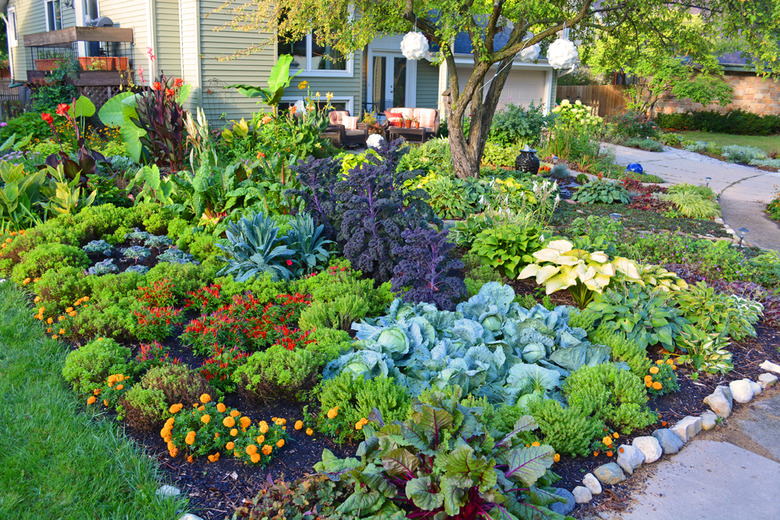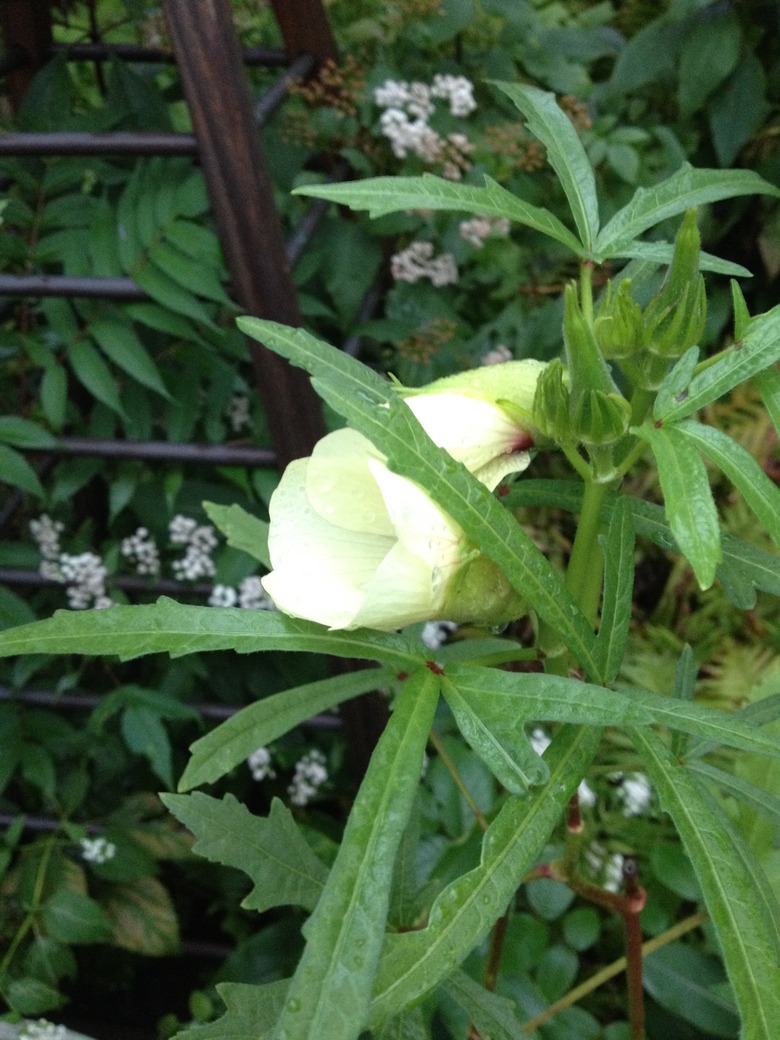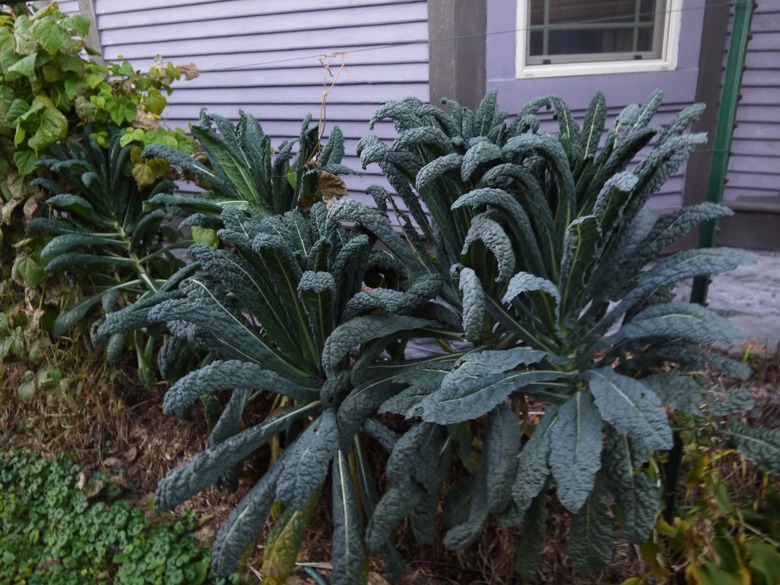What Is Edible Landscaping? How Do I Get Started?
Edible landscaping is far from a new concept, but it is an idea that has attracted considerable attention in recent years as the act of growing food has re-emerged as the number-one gardening objective most homeowners value. The concept is self-evident: Instead of surrounding your home and yard exclusively with plants selected for their beauty, interest, or low-maintenance needs, you intersperse the landscape specimens with plants you can eat. Ideally, these edible plants are selected for their appearance as well as their nutritional bona fides_._
The good news is that there is a long list of consumable plants that can contribute to the appearance of your yard and garden—and some of the edible varieties may surprise you. The most popular ones tend to fall into the herbs and leafy greens categories. And it helps that there are a number of flowers whose blossoms or seeds are classified as edible, such as nasturtiums.
The most popular plants in an edible landscape fall into five basic categories:
- Fruit-bearing trees
- Berry bushes
- Herbs
- Leafy greens
- Edible flowers
Other popular edible plants, such as tomatoes or cucumbers, will create fruit that makes any gardener or home cook swoon, but they tend to overgrow an unconstrained environment. For many vegetables, the vegetation is not particularly appealing and tends to exhibit signs of disease fairly early in the growth cycles (even though the observable signs are not necessarily detrimental to the plant). So save your watermelons, Big Boys, and zucchini for the back forty if you want to present a beautiful, well-manicured edible landscape to your friends and neighbors.
The basic tenets of garden design apply every bit as much to an edible landscape as they do to a formal garden populated with showy landscape and specimen plants. Color, form, and scale are chief among them. If you are considering planting a stand of dinosaur kale amidst your hostas, pay attention to the colors and textures and ultimate size of the plant when you are doing your planning. Also consider staking and trellising needs: Many edible plants (including dinosaur kale) tend to flop over when they are nearing harvest time. Do you wish to have trellises and stakes in your landscape garden? The answer often is "No."
So the simplest advice to offer if you are contemplating an edible landscape is to treat the edible plants as if they were flowers. Their edible nature should be a secondary characteristic. Otherwise, you will end up with what reads to passersby as a vegetable garden in your front yard. Not that there is anything wrong with that: Vegetable gardens have their own practical beauty that excites many people. But always keep in mind that the issue at hand is primarily one of landscaping.
Tips for Getting Started in Edible Landscaping
Tips for Getting Started in Edible Landscaping
Use containers and raised beds. Not only do they introduce interesting structures into your landscape, but they also expand the universe of plants that make sense for your climate. When winter comes calling, you can move the containers indoors and overwinter your plants. And if you have any access issues, planting in raised beds or taller containers brings the plants and the maintenance tasks that much closer to you.
Use edging to isolate edible specimens. Whether it is embedded wine bottles or hand-cast concrete edgers, installing edgings around your plants adds distinct intentionality to your yard or garden.
Plant groundcover or lay mulch to bind your plantings together. Mulch and groundcover (also called green manure) have practical benefits in a landscape, helping to retain moisture and minimize weed growth. But installing a layer of either also helps tie your plantings together visually and makes an otherwise random series of plantings appear to be highly designed.
Combine edibles with cut-flower beds. You are asking both types of plants to produce something valuable to harvest, and you will find that the care and maintenance of plants in these two categories are very similar.
Pay attention to foliage color and texture. Vegetables and other edibles may not be not strong in terms of blooms, but many have foliage that is quite arresting in color and texture. In addition to kale, other plants with attractive foliage include Swiss chard, asparagus, and rhubarb.
Best Plants for Getting Started in Edible Gardening
Best Plants for Getting Started in Edible Gardening
To get you started, here is a partial list of edible plants that are easy to grow and can shine in a landscape setting:
- Asparagus
- Artichoke (Jerusalem, Globe)
- Rose hips
- Fig tree
- Chard (Rainbow, City Lights)
- Nasturtium
- Chives
- Berries (elderberries, blueberries, raspberries)
- Sunflowers
- Rhubarb
- Tomatillos
- Okra
- Amaranth
- Anise hyssop
- Pear (Asian and others)
- Bay laurel
- Beans (Runner, scarlet, others)
- Catmint/Catnip
- Fennel
- Dill
- Kale (dinosaur, curly, Russian red)
- Lavender
- Sage
- Thyme
- Rosemary
- Oregano
- Basil
- Lettuces
- Edible flowers (nasturtium, violas, pansies, borage, calendula)


